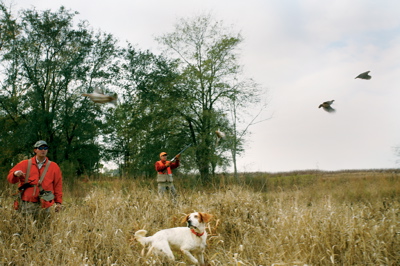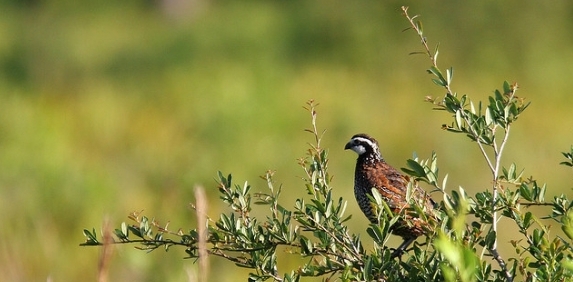Bobwhite quail populations are up substantially in Texas thanks to better habitat. Quail hunters, on owned or leased land, should see more birds than they have over the past decade. Thanks to timely rainfall and cooler temperatures this year, Texas quail hunters can anticipate hearing more bobwhites during the upcoming quail hunting season, which gets under way statewide Saturday, October 31.
Bobwhite quail could provide the best indicator of how timely rainfall has benefited wildlife in Texas this year. The combination of spring and summer rainfall and lower-than-average temperatures across most of the summer has resulted in a flush of vegetation and insects and an extended window of opportunity for nesting, a combination for success that quail have not enjoyed for many years.

Reports from South Texas sound the most dramatic, according to Robert Perez, TPWD’s quail authority, with broods being observed all summer long, multiple age classes and large brood size (good chick survival).
“Some are predicting a real boom year in some parts of South Texas,” Perez noted. “The Rolling Plains have been hit hardest over the last several years with periods of extended drought, but the needle is definitely moving in the right direction. Survey results showed some improvement last year but quail appear to have made a striking recovery in the region this past summer. The quail roadside index recorded an amazing five-fold increase. Lots of large broods have been observed there as well, and we expect to see a good bump in numbers in the region.”
Quail season runs through Feb. 28, 2016.The daily bag limit for quail is 15, with 45 in possession. Legal shooting hours for all non-migratory game birds are 30 minutes before sunrise to 30 minutes after sunset. The bag limit is the maximum number that may be killed during the legal shooting hours in one day.
Perez notes the Gulf Coast is not as tied to rainfall as the arid rangelands, so production can actually be hampered by excessive rains. Early reports of good production and above average survey results in the remnant prairies of the Gulf Coast are a good indication that numbers will likely remain high, as they have been the past couple of years.
Quail are notorious for trending with weather, going through years of exceptional production when conditions are favorable, followed by down turns when the weather doesn’t align properly. Biologists refer to it as “boom and bust” cycles. Last season marked the end of three consecutive years of drought conditions in both South Texas and the Rolling Plains where quail populations began to show signs of recovery. Good hunts were reported in several areas of South Texas and a few areas of the Rolling Plains. Good to excellent hunts were also reported in the central Gulf Coastal Prairies where an all-time high was recorded by the TPWD 2014 survey.
Heading into 2015, excellent late winter conditions produced a flush of winter greens providing nutrition for hens prior to the nesting season. The core Texas quail hunting regions received frequent rainfall events from spring through midsummer which produced excellent nesting cover, abundant forbs and countless insects. Improved habitat combined with summer temperatures that remained below the 100 degree mark through the second week of July allowed quail to enjoy an extended window of breeding and nesting opportunity throughout the Rolling Plains, South Texas and the Trans Pecos.
Consequently, according to Perez, the forecast for quail hunting in many areas of Texas is good to excellent this year. Looking forward, climatologists are predicting an El Nino year which may bring another mild wet winter and excellent breeding conditions heading into the 2016 season.
